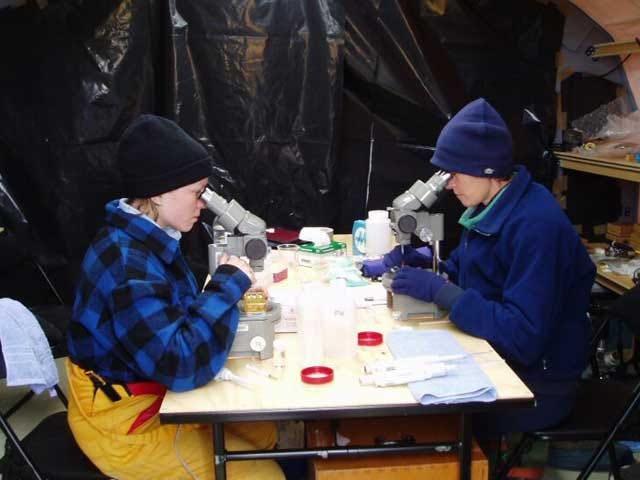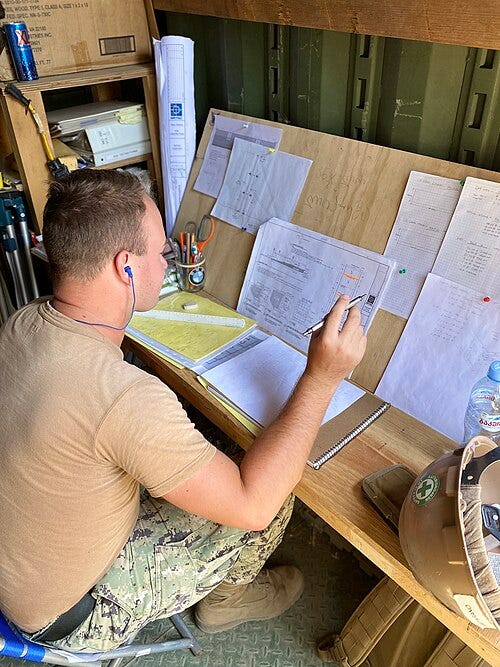“The establishment of a law, moreover, does not take place when the first thought of it takes form, or even when its significance is recognised, but only when it has been confirmed by the results of the experiment.”
Dmitri Mendeleev
I previously wrote how the effective practice of law involves seeing through different ‘lenses’.
Here I’ll talk about the lens which focuses one’s gaze on the practical steps required for something’s implementation, that which prompts a look at what is actually involved in making it happen.
I call this the ‘practicalities lens’.

Why is the practicalities lens important?
We might have an idea for a piece of work or a project, for which we are clear on its purpose and our role, and have a vision of the finished product in our heads.
But until we see in our mind’s eye what it actually entails to bring that idea to fruition, we don’t have a full perspective and may have missed out important considerations.
This is particularly important before embarking on an initiative that might be time-consuming or expensive (or both) -
It not only allows us to see whether we want to go down that route at all, but also allows us to correct course if it turns out our initial idea contained some false assumptions.
When is the practicalities lens useful?
Project planning
A key scenario when the practicalities lens can be used is when planning any kind of project work (work to be done in multiple stints, perhaps involving a group of people).
The time taken to deliver a project is something we often don’t fully appreciate until we put on the practicalities lens.
I have heard from legal operations practitioners that one thing often omitted from decision-making on whether to buy or build legal technology, is the time required for testing.
Even with something closer to home, like a house renovation, we often concentrate too much on factors like the cost of competing quotes and the designs being offered and omit to consider that, from a practical perspective, depending on which one we choose, we may need to move out while the works are ongoing (which will add to the cost).

Risk assessment
As part of contract negotiations another party may make a request which is simply so important to them that they ask us to ‘take it or leave it.’
And such requests can prompt reactions in our minds about whether such a term is ‘market standard’ or completely against our internal policies, or just illogical.
Yet it is only when working through the practical effects of accepting such a term that we get a full view on whether we can really live with it, despite it being objectionable.
My boss is the master at putting on the practicalities lens -
for example, in a situation where another party is seeking to amend the arrangements on confidentiality, he has taught me to walk through considerations such as:
How will the confidential information be exchanged? And what kinds of protections are there at the point of exchange?
How could the information be disclosed (both voluntarily and involuntarily)? And what kinds of protections are in place to ensure the information cannot be used?
How could such information be exploited if it got into the wrong hands? And what effect would that have on the discloser?
And so on.
Knowing the answers to these kinds of questions give a much deeper context to assessing the likelihood and impact of a perceived risk.
Decision-making
As part of wearing the vision lens, we might come up with a number of options for the possible end-state of an idea.
The practicalities lens can then be used to assess the relative merits of each option.
I was recently advising some internal clients on how we might ensure that our customers became aware of certain benefits for products we were selling through distributors, and we came up with various options (for example, make it a contractual requirement for our distributors to flow these down to customers; or for us to notify customers directly of such benefits) -
it was only when looking at the practicalities involved with each option, that we realised there were more pros associated with one over the other.
This helped us decide on which option to choose.
How to wear the practicalities lens?
Draw flow-diagrams
I like draw or write out the different steps involved in making something work.
I start with my vision of the finished product, and then either work backwards from there, looking at each step before it.
Or I start with the first step and ask myself, as Shane Parrish advocates, ‘and then what?’
This helps me to see the consequences of each step, so I have a view of all the connecting links in the chain.
Worked example
A good exercise, particularly in a group, is to carry out a ‘table top exercise’ -
a simulation of how an event might occur.
This is particularly useful for crises or emergencies (for example, a cyber attack) and helps people get full visibility of the respective roles and whether assumptions on how to deal with such crisis (for example, those set out in internal policies and procedures) work in practice.

Some contracts can involve complicated steps regarding how money might be paid, particularly if there are various conditions or events which need to happen to before payment is made.
I’ve found it helpful to go through worked examples of such payment clauses, plugging dummy numbers into tables or sketching stick-men diagrams, so I can be sure that what I am drafting works in practice.
Premortem
It can help to look at the practicalities with a specific eye to what can go wrong, and the ‘premortem’ exercise, developed by psychologist Gary Klein, can help in this regard -
“A premortem is the hypothetical opposite of a postmortem. A postmortem in a medical setting allows health professionals and the family to learn what caused a patient’s death. Everyone benefits except, of course, the patient. A premortem in a business setting comes at the beginning of a project rather than the end, so that the project can be improved rather than autopsied. Unlike a typical critiquing session, in which project team members are asked what might go wrong, the premortem operates on the assumption that the “patient” has died, and so asks what did go wrong. The team members’ task is to generate plausible reasons for the project’s failure.”
This helps strengthen a project plan.
Klein gives the example of how in a group exercise in an organisation to evaluate a research project, one team member suggested that the initiative’s failure happened because of a lack of time to prepare a proper business case. As Klein describes:
“During the entire 90-minute kickoff meeting, no one had even mentioned any time constraints. The project manager quickly revised the plan to take the corporate decision cycle into account.”
How does it work in practice?
Even outside of the practice of law, the practicalities lens is useful in every day life:
yesterday my wife asked my thoughts on a movie night fundraiser she is organising at our kids’ school and whether there were any tasks needing volunteers which she had missed out -
by working through how the night would unfold, from opening up the school at the start to cleaning it up at the end, we uncovered a variety of things we hadn’t thought about and made certain corrections to the itinerary before it was sent out.
The putting on of the practicalities lens in that instance came in the form of a question:
“How does it work in practice?”
As the quote from scientist Dmitri Mendeleev at the start of this post suggests, the advantage of the practicalities lens is that it moves us from superficially knowing something in theory, to having an understanding of the full extent of what is required to deliver.
In the words of psychologist Edward De Bono:
“The skills of action are every bit as important as the skills of knowledge.”
The practicalities lens has a bias towards action.



